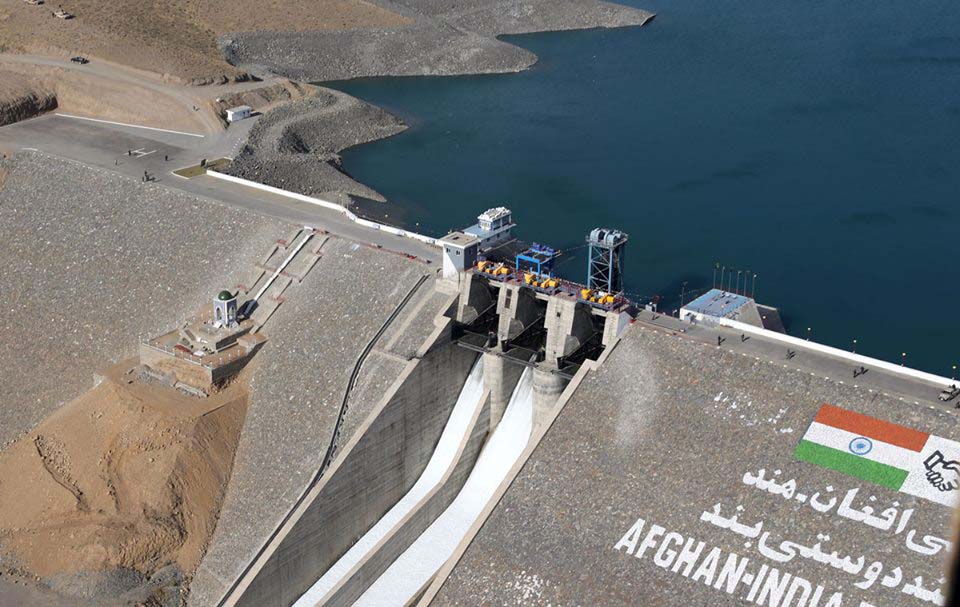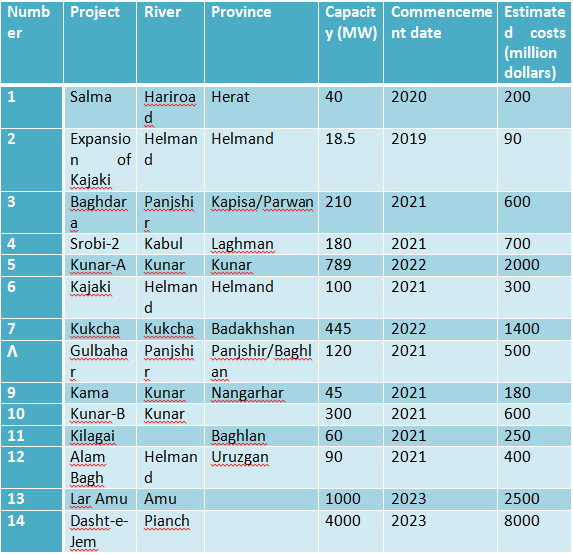Infrastructural projects: dams and recent progresses
In the past two weeks we have unprecedentedly witnessed the construction of infrastructures (dams) in the country. After 40 years of ups and downs while building Salma Dam in Herat, the Afghan President Ashraf Ghani and Indian Prime Minister Narendra Modi at last inaugurated the dam in a special ceremony on June 4, 2016 in Herat.
Following the inauguration of Salma Dam, the contract to expand Kajaki Dam in Helmand was also signed with a Turk-American company. Based on the deal, the company will prepare the proposal to expand the dam within the three months and will complete the dam within three years. Last week the Afghan government also inked an agreement with an Italian company to construct Bakhshabad Dam in Farah.
The necessity and capacity of building dams in Afghanistan, and the impacts of these dams on Afghan economy are the issues analyzed here.
The need to build dams
The followings are the reasons why construction of dams is necessary in Afghanistan:
First; agriculture: there are 9610000 hectares of arable land in Afghanistan which covers 14.73% of total lands in the country. From this amount, only 5.324 million hectares are under cultivation but due to lack of water, 4.28 million hectares of arable land in the country are not under cultivation. But with the construction of dams, these lands will also come under irrigation.
Second; electricity: Afghanistan generates only 19% of its needed electricity inside the country and imports the remaining 81% from neighboring countries. Thus the country spends millions of dollars on importing electricity. According to Da Afghanistan Breshna Sherkat (DABS, Afghanistan Electricity Company), from 2007 to 2015, Afghanistan has spent 973 million dollars to import electricity, while the country has vast opportunities and capacities to produce electricity and only its hydropower capacity is 23 thousand MWs of electricity. Hydroelectric dams have a dual function which means besides producing electricity it preserves water.
Third; the prevention of natural disasters: flood in various regions in Afghanistan annually kills many people, causes financial loses and destroys agricultural lands in the country. Construction of dams will in a great extent prevent these disasters.
Fourth; the future situation and water crisis: the population in Afghanistan is expected to be doubled in the coming 30 years which means the country would need more water, irrigation of lands and electricity in the coming years. But unfortunately, most of Afghanistan’s waters flows into the neighborhood countries and no practical step have been taken to control these waters inside the country. These waters will be the subject of future politics and also the major reason of future wars.
The capacity to build dams in Afghanistan
There are five river basins in the country, which in a large extent have the capacity of building dams on them.
Overall, several dams are considered to be built on these five river basins. Practical work on some of them is commenced, for instance, the expansion of Salma and Kajaki Dams, on some others studies have been conducted (such as, Baghdara, Srobi-B, Kunar-A, Kajaki-B, Kukcha, Gulbahar, Kama, Kunar-B and Kilagai) and some others are in pre-study stages (for instance, Alambagh, Lar Amu, Dasht-e-Jam).
14 dams are mentioned in the chart below, which will have the capacity to produce 7397.5 MW of electricity and building them will cost 17720 million dollars.
Although, there is no exact research about the hydroelectric production capacity of Afghanistan, but energy experts share a common view that Afghanistan has the capacity of generating 23 thousand MW of hydropower. (For further information see Chart-1)
Chart-1: the opportunities of building Dams
Source: annual report of the Center for Strategic and Regional Studies (CSRS): 1394
Salma, Kajaki and Bakhshabad Dams
However, the Salma Dam had begun in 1970s, but the construction of the dam was affected by the three decades of war in Afghanistan and after 2001, due to the Afghan government’s demand, India began the construction of the dam and recently completed it. India spent approximately 290 million dollars to build the Salma dam which has the capacity to generate 42 MW of electricity per hour. The Salma Dam will enlighten almost 2.5 hundred thousand homes and will irrigate 75 thousand hectares of lands in 640 villages in Chisht-e-Sharif, Uobi, Pashtun Zarghun, Karukh, Guzara, Engil, Zindjan, Kushan and Ghurian districts.
On the other hand, based on the new agreement, the Salma dam which now has the capacity of producing approximately 51 MWs of electricity will produce 151 MW of electricity after installing four other turbines. The dam can also preserve 1.1 billion cubic meters of water which will irrigate vast agricultural lands.
Besides that, the contract of building Bakhshabad Dam in Farah was also singed between the Afghan government and an Italian company. The dam will have the capacity of producing 27 MW of electricity and preservation of 1.3 billion cubic meters of water which will irrigate 104 thousand hectares of lands in Farah.
Obstacles in the way of constructing dams
Although there are many obstacles in the way of building dams in Afghanistan but the followings are the two main hindrances:
Financial resources and attracting investments: Afghanistan has vast capacity of producing hydropower, but construction of dams to produce hydropower requires large sums of money, which the Afghan government and governmental budget cannot afford. For instance according to the chart above, 17.7 billion dollars is needed to build all those fourteen dams. On the other hand, foreign donors are not interested to build major dams as well; because on the one hand, it costs a large amount of money and on the other hand, it requires long time. In addition, the Afghan government has not been able to convince foreign investors to invest in dams in the country. Insecurity, lack of water agreements and opposition of neighboring countries are the reasons why foreign investors are not interested in investing in dams in Afghanistan.
Security: insecurity is also the main reason why foreign investors are not willing to invest in energy sector in Afghanistan. the Afghans have experienced in the past 15 years that controlling water would not only require hard working but also spoiling the bloods of many Afghans and the existing dams are also build with the cost of many Afghan lives.
The end


